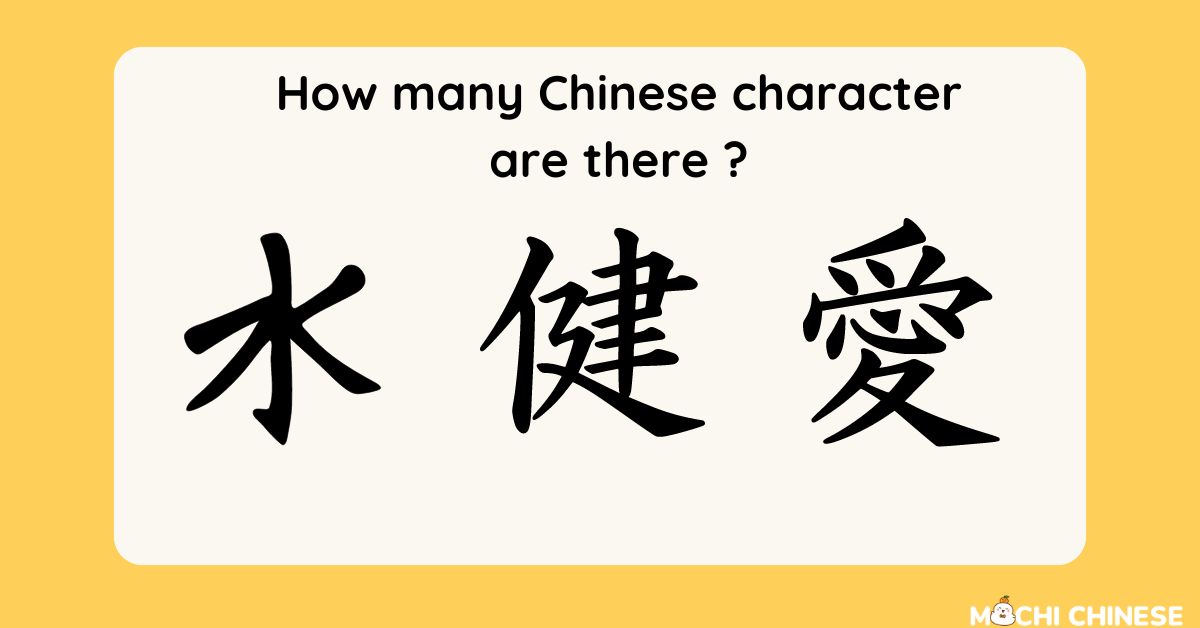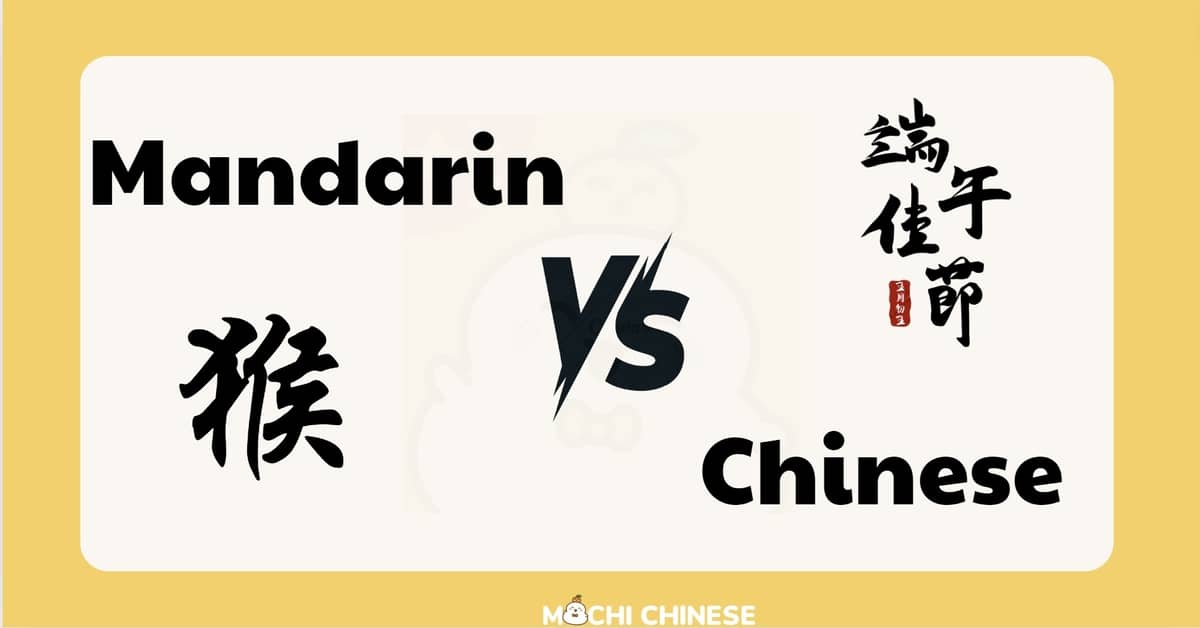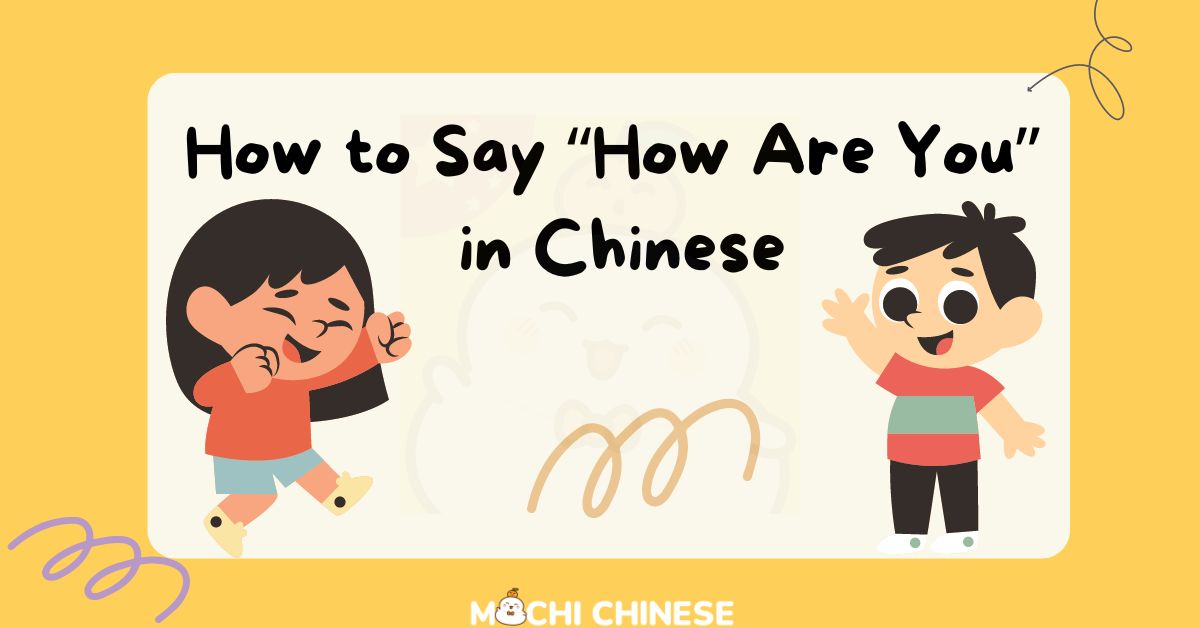National anthems serve as sonic symbols of unity and identity across the globe. One such emblem is the Chinese National Anthem, known as “Yìyǒngjūn Jìnxíngqǔ” (义勇军进行曲) or “March of the Volunteers.”
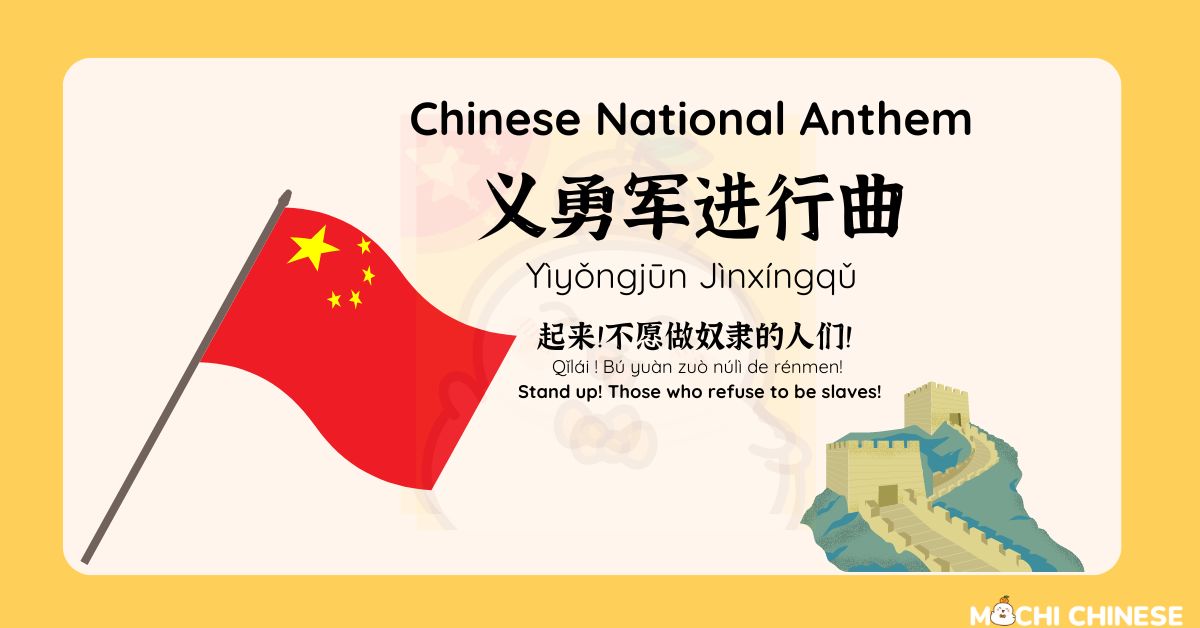
Historical Context Chinese National Anthem
Origins and Creation
The Chinese National Anthem, “Yìyǒngjūn Jìnxíngqǔ” (义勇军进行曲) or “March of the Volunteers,” emerged during a turbulent period in Chinese history. In the early 1930s, China was grappling with the threat of Japanese invasion, which culminated in the outbreak of full-scale war in 1937. Amid this national crisis, there was a surge of patriotic fervor and a pressing need for a symbol to unify and inspire the Chinese people.
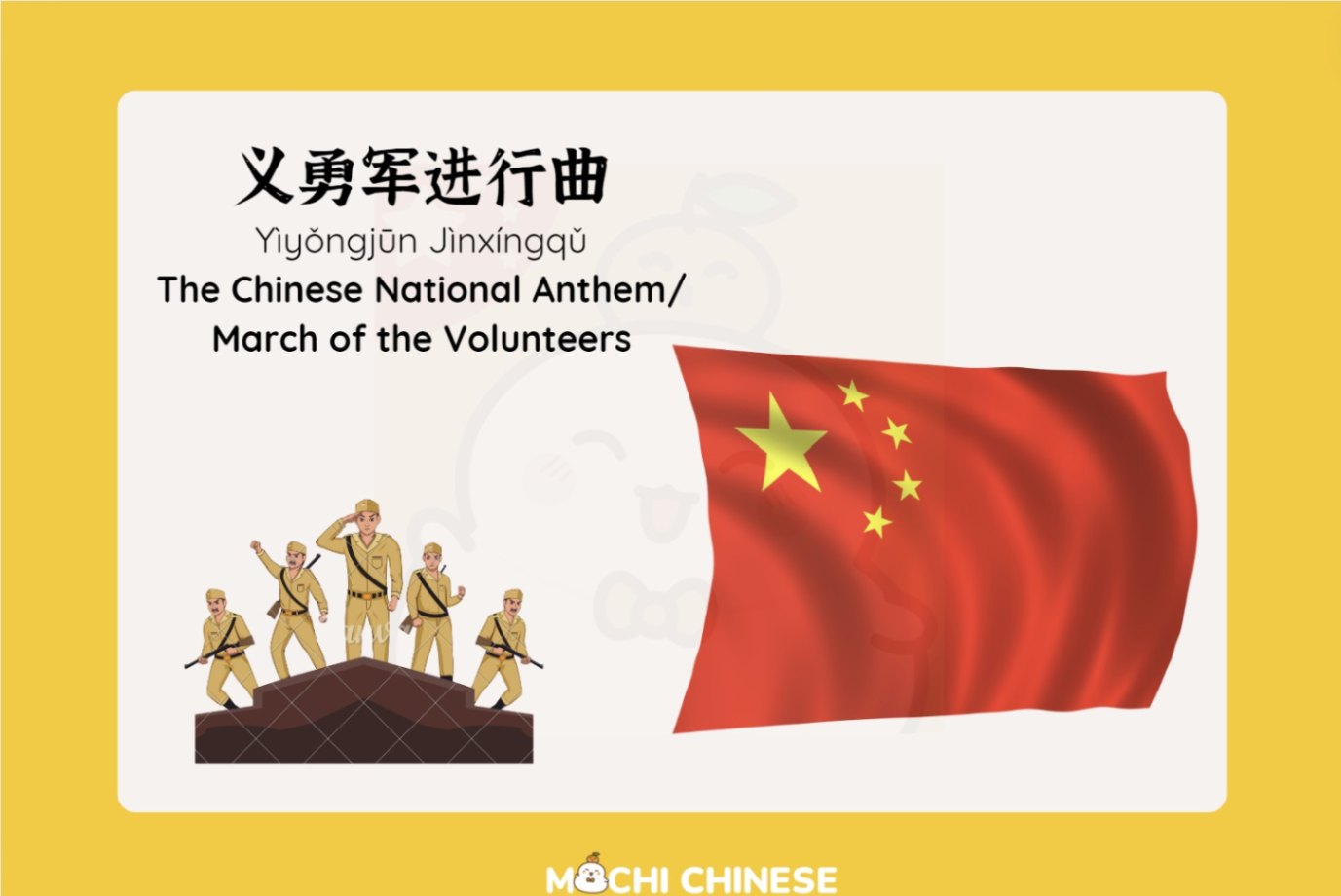
This song belongs to the marching genre. This song was written by poet and opera composer Tian Han and set to music by Nie Er around the middle of the Sino-Japanese War. Tian Han wrote “March of the Righteous and Courageous Army” in 1934 for a play he composed that same year. According to records, the lyrics of this song were written on a piece of cigarette paper after he was arrested in Shanghai and sent to the Kuomintang prison in 1935.
The song was originally the subject of a film produced by the Electric Power Company. Shanghai Cinema was staged in 1935. The film’s content is to tell the story of a poet representing the intellectual class of old China, who put aside his pen and took up his gun to attack the anti-Japanese front, rushing before the enemy. The song that appeared at the beginning and end of this movie left a deep impression on a large audience at that time. Not long after, it became a famous Chinese war song during the war against Japan.
Evolution Over Time
The first person who proposed to make the song “March of the Righteous and Courageous” as the national anthem of the new China was Nie Er, a famous Chinese painter.
Pre-1949: Before the establishment of the People’s Republic of China (PRC), the anthem served as a symbol of national unity and resistance. Its widespread popularity and association with the anti-Japanese movement cemented its status in the hearts of the Chinese people.
Post-1949: With the founding of the PRC in 1949, “March of the Volunteers” was officially adopted as the national anthem. This formal recognition underscored the anthem’s significance in the country’s modern history and its role in the collective memory of national struggle and triumph.
1982 Reconfirmation: In 1982, the National People’s Congress reaffirmed the anthem’s status, ensuring its continued role as a key element of Chinese national identity. This reaffirmation coincided with efforts to standardize its rendition and promote its respectful performance across various public and official settings.
Lyrics and Translation
The Chinese lyric version
起来(1)!不愿做奴隶的人们!Qǐlái (1) ! Bú yuàn zuò núlì de rénmen!
把我们的血肉,筑成我们新的长城! Bǎ wǒmen de xuèròu, zhù chéng wǒmen xīn de chángchéng!
中华民族 到了最危险的时候,Zhōnghuá mínzú (3) dàole zuì wēixiǎn de shíhòu,
每个人被迫 着发出最后的吼声。Měi gè rén bèi pò zhe fāchū zuìhòu de hǒushēng.
起来!起来!起来!Qǐlái! Qǐlái! Qǐlái!
我们万众一心,Wǒmen wànzhòng-yīxīn (4),
冒着 敌人的炮火,前进 Màozhe dírén de pàohuǒ, qiánjìn
冒着敌人的炮火,前进! Màozhe dírén de pàohuǒ, qiánjìn!
前进!前进!进! Qiánjìn! Qiánjìn! Jìn!
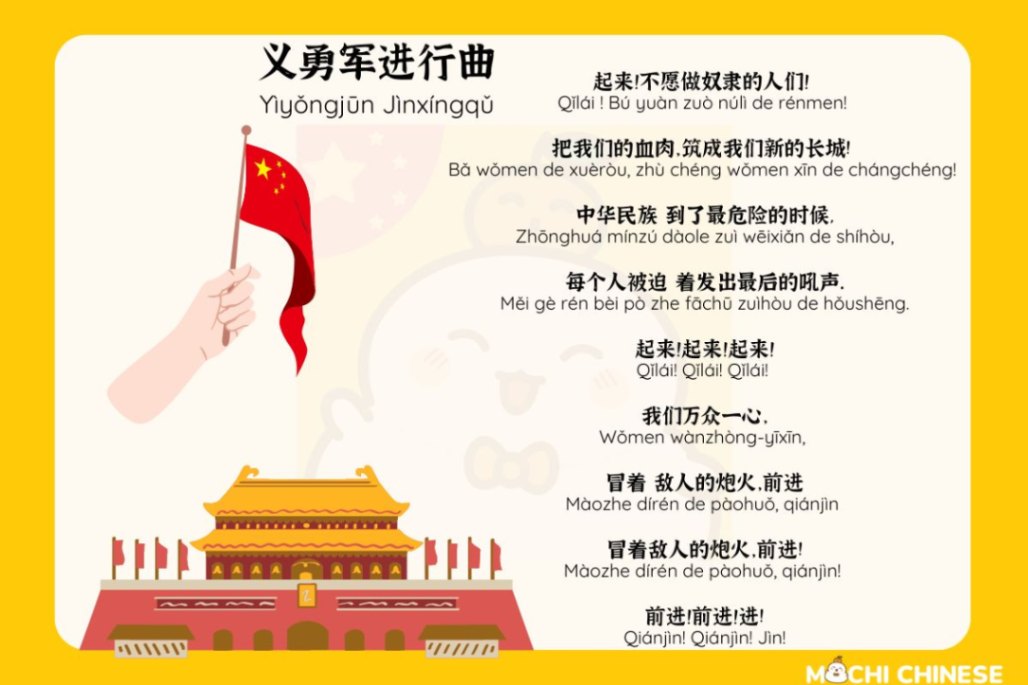
The English lyric version
Stand up! Those who refuse to be slaves!
With our flesh and blood, let’s build our newest Great Wall!
The Chinese Nation is at its greatest peril,
Each one is forced to let out one last roar.
Stand up! Stand up! Stand up!
We are billions of one heart,
Braving the enemies’ fire, March on!
Braving the enemies’ fire, March on!
March on! March on! On!
Now let’s be good Chinese learners and study some of the keywords from the Chinese national anthem lyrics.
Learn Chinese through the anthem
The Chinese National Anthem, “Yìyǒngjūn Jìnxíngqǔ” (义勇军进行曲), provides an excellent opportunity for learners of Chinese to improve their language skills. By studying the anthem, learners can gain insights into pronunciation, memorization techniques, and cultural nuances.
To accurately pronounce the anthem, it’s essential to understand Pinyin and the four tones in Mandarin. Besides, dividing the national anthem into smaller parts and focusing on each part one by one is a way to make it easier to remember. Regularly repeat the lyrics aloud. Repetition helps solidify your memory and improve pronunciation.
Delve into the meaning behind each line of the Chinese lyrics, unraveling their essence.
起来 (qǐlái): This is the first word in the national anthem and appears throughout the song. It means “to stand up”. In the national anthem, it calls on those 不愿做奴隶 (Cú yuàn zuò núlì) (“not willing to be slaves”) to stand up and fight.
前进 (qiánjìn): This word also appears many times in the lyrics. 前 (qián) means “ahead” and 进 (jìn) means “advance.” This is a formal word often used as a military order, asking troops to “move forward”.
中华 (Zhōnghuá) is a poetic, patriotic way of referring to China, focusing on the people. This word also appeared in the Spring Festival Gala of CCTV (China Central Television).
万众一心 (Wànzhòngyīxīn): often used to boost morale and promote patriotism. 万众 (wànzhòng) means “millions of people” . 一心 yìxīn means “one heart.” The sentence is used to describe all the people united with a common goal or belief.
被迫 (bèi pò): The word starts with 被 (bèi), indicating a passive voice. 迫 (pò) means “to force, to compel.” In the lyrics, the Chinese people are forced to 发出最后的吼声 (fāchū zuìhòu de hǒushēng) (let out one last roar).
冒着 (mào zhe): is a verb that means “to brave” or “to face dangers” in this context. In the lyrics, it’s asking the Chinese people to brave the enemies’ bombs and bullets and march on – 冒着敌人的炮火,前进! (Mào zhe dírén de pàohuǒ, qiánjìn!).
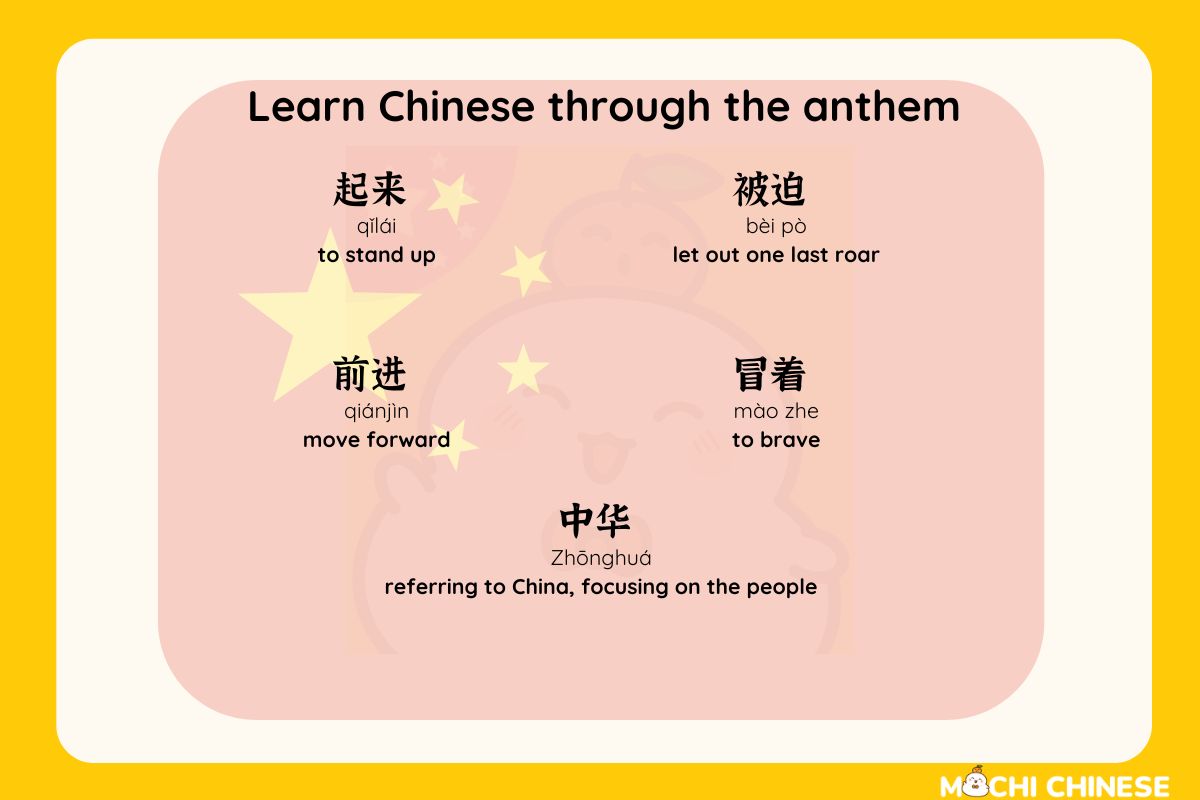
To be able to understand the meaning of song lyrics, you still need to first build a rich and solid vocabulary. Mochi Chinese has nearly 5,000 vocabulary words, meeting all learners’ needs whether they are learning for basic communication or taking the HSK test. The vocabulary in the app is all in flashcard format with pinyin, native voice audio to help you easily remember associations through illustrations, standard pronunciation, and how to use each new word through example sentences. The App also helps learners find the golden time that is the most effective time to review before you forget by using an algorithm combined with the Spaced Repetition method. Mochi Chinese will remind you to review at the right time, saving maximum time and effort.
Symbolism and Themes
The Chinese National Anthem is deeply embedded with historical and cultural values that resonate with the Chinese people’s collective memory and identity. They commemorate the nation’s struggles and victories, emphasize the importance of unity and collective effort, and celebrate the enduring spirit of courage and perseverance. By invoking these themes, the anthem serves not only as a patriotic song but also as a reminder of the values that have shaped China’s past and continue to guide its future. The lyrics of “Yìyǒngjūn Jìnxíngqǔ” reflect profound historical and cultural values that are integral to Chinese identity.
Cultural Significance
As the solemn symbols of the country, the Chinese national anthem《义勇军进行曲》Yìyǒngjūn jìnxíngqǔ often go together in formal ceremonies. In Chinese, this procedure is called 升国旗,奏国歌 Shēng guóqí, zòu guógē “Raise the national flag, and play the national anthem.” People are encouraged to sing along with the music.
At higher administrative levels in China, the anthem is played at political occasions, such as on the 国庆节 Guóqìng jié “National Day” celebration, 人大会议 rén dà huìyì National People’s Congress meeting,…
In primary and secondary public schools and some government organizations, there is a weekly 升旗仪式 shēng qí yíshì “flag-raising ceremony” where the national anthem is played while the flag is being raised on the pole while the students or employees sign the national anthem.
In 2017, the Chinese national anthem law was passed, stating on what occasions the national anthem should be played, how the official recordings provided by the government (see linked site above) are the only ones allowed to be played, and what the consequences of insulting the national anthem, such as altering the lyrics or singing it in a distorted way, were. However the law remains controversial, especially in Hong Kong.
Musical Composition
Musical Structure
The musical composition of “Yìyǒngjūn Jìnxíngqǔ” (义勇军进行曲), or “March of the Volunteers,” plays a crucial role in conveying the anthem’s powerful message of resilience, unity, and patriotism. Composed by Nie Er, the anthem’s music is characterized by its stirring melody, robust rhythm, and dramatic structure. Here is a detailed analysis of its musical elements:
Tempo: The anthem is typically performed at a brisk, march-like tempo of around 104 beats per minute. This tempo reflects the urgency and determination conveyed in the lyrics.
Melody: The melody of “March of the Volunteers” is straightforward and memorable, making it easy for people to sing and remember. It often follows a simple, ascending contour that conveys a sense of rising action and optimism.
Style: The phrasing of the anthem is clear and well-defined, with each phrase corresponding to a line of the lyrics. This structure helps to emphasize the meaning of the words and makes the anthem more impactful.
Performances
The anthem has been performed at numerous significant events, both domestically and internationally. Notable performances include the opening ceremonies of the Olympic Games, state visits, and national holidays. Each performance serves to reinforce the anthem’s role as a symbol of national pride and unity.
Conclusion
The Chinese National Anthem, “Yìyǒngjūn Jìnxíngqǔ” (义勇军进行曲) or “March of the Volunteers,” holds a special place in China’s cultural and historical landscape. Its powerful lyrics and stirring melody encapsulate the nation’s enduring spirit of resilience, unity, and patriotism.
The lyrics reflect core Chinese values such as bravery, sacrifice, unity, and perseverance. These themes resonate deeply with the Chinese people’s collective memory and continue to inspire pride and solidarity. Engaging with the anthem allows learners to connect with Chinese history and values on a deeper level, fostering a greater understanding and respect for the country’s cultural heritage.

